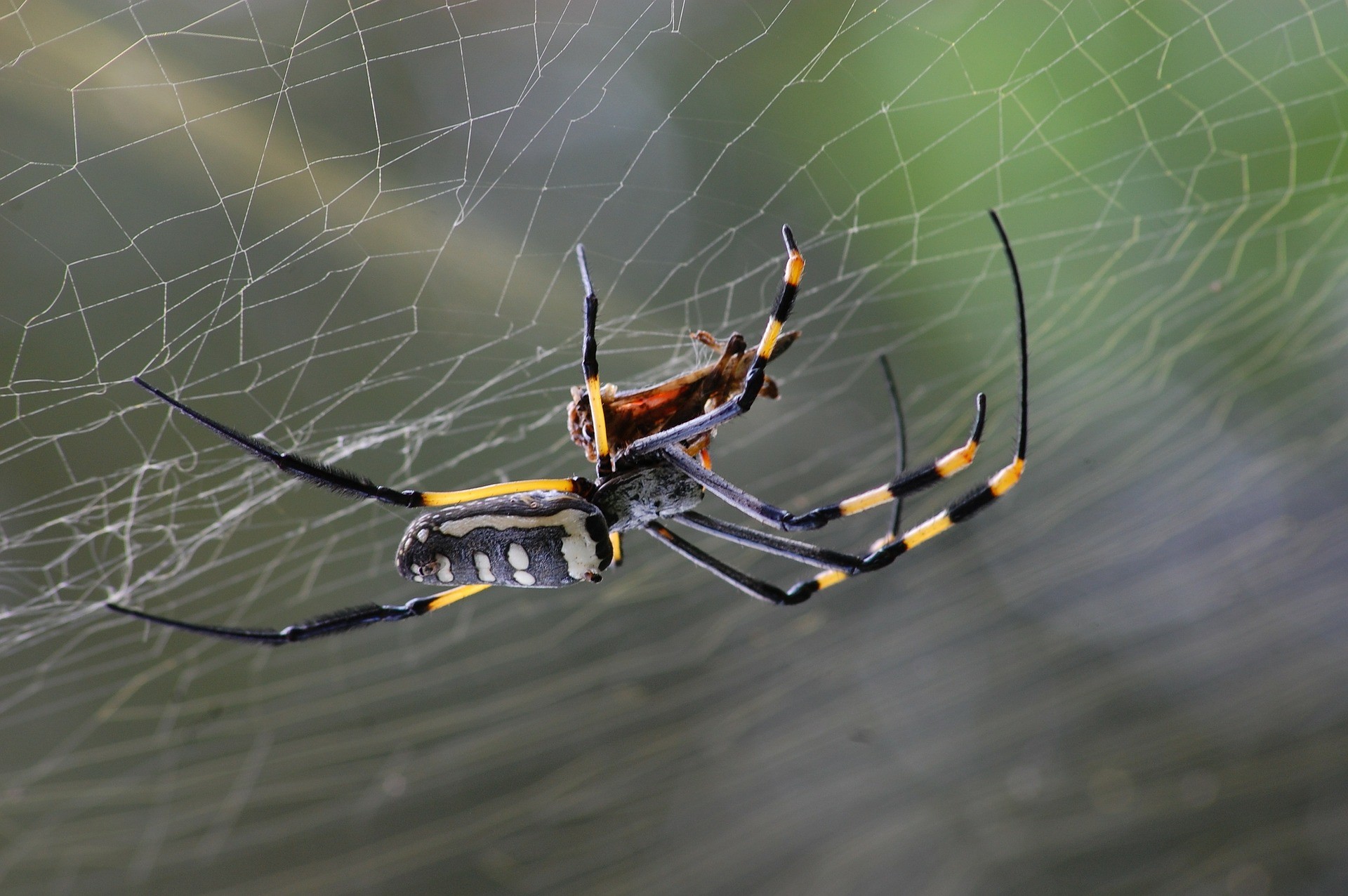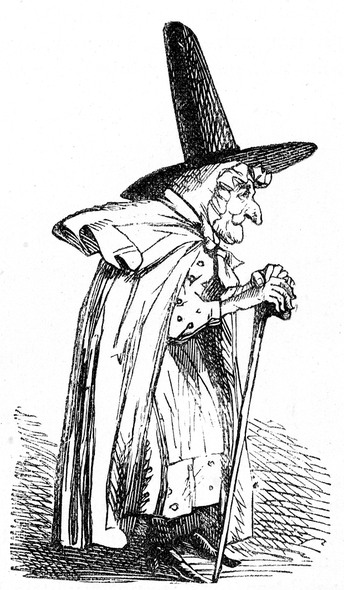A playful collection of reviews for Halloween
Mathematicians have a special way with language. For us a manifold is not going to be found attached to the engine of your car. You would never use a mathematical pole to propel your punt down the Thames or to clear a bar 6 meters above the ground. And to really annoy people, graph theory has very little to do with the graphs we teach kids about in school.
Here are some reviews that I picked because of our abuse of language, with a theme suitable for trick or treaters.
From pixabay.com [Public Domain]
MR3133297
Fontaine, Bruce(3-TRNT); Kamnitzer, Joel(3-TRNT); Kuperberg, Greg(1-CAD)
Buildings, spiders, and geometric Satake. (English summary)
Compos. Math. 149 (2013), no. 11, 1871–1912.
17B10 (18D10 51E24 57M27)
The authors present not only their own results but also a bright and thorough overview of the development over the last 60 years of the representation theory of simple simply connected complex algebraic groups G. Special attention is paid to the connections with graphs and affine buildings. At the end of the paper the authors express their opinion about the direction in which the research should proceed. To study the representation theory of a group G they consider the affine Grassmannian Gr of its Langlands dual group. The category rep(G,k) of finite-dimensional representations over k is a pivotal category, i.e. a monoidal tensor category such that each object A has a two-sided dual object A∗. The authors are interested in variations of rep(G,C). A central role is played by minuscule representations V(λ), where λ is a dominant weight such that ⟨α∨,λ⟩≤1 for every positive coroot α∨. The authors define the free spider for G generated by the minuscule representations of G. This is a certain C-linear pivotal category, in which morphisms are given by linear combinations of labelled trivalent graphs called webs. The webs can be used to produce invariants in tensor products of minuscule representations. For each web they construct a configuration space of points in the affine Grassmannian. Via the geometric Satake correspondence, the authors relate these configuration spaces to the invariant vectors coming from webs. In the case G=SL(3), non-elliptic webs yield a basis for the invariant spaces. The explanation of the non-elliptic condition, which is equivalent to the condition that the dual discoid of the web is a CAT(0) space, is given by the fact that affine buildings are CAT(0) spaces. To reproduce here the precise form of the theorems is not opportune because of their complexity. For mathematicians who do not specialize in representation theory, reading this paper can be a difficult task.
Reviewed by K. Strambach
From pixabay.com [Public Domain]
MR3153955
Mendel, Manor(IL-OPENR-CS); Naor, Assaf(1-NY-X)
Ultrametric skeletons.
Proc. Natl. Acad. Sci. USA 110 (2013), no. 48, 19256–19262.
46B85 (46S50)
An ultrametric space Z is a space with a metric ρ such that for all x,y,z∈Z, ρ satisfies the strong (ultrametric) inequality ρ(x,y)≤max{ρ(x,z),ρ(z,y)}.
Saying that a metric space (A,d) embeds into a metric space (B,ρ) with distortion D∈[0,∞) means that there exists fA→B such that:d(x,y)≤ρ(f(x),f(y))≤Dd(x,y) for all x,y∈A. Bd(x,r) denotes the closed ball of radius rabout x. The authors prove the following.
Theorem 1. For every ε∈(0,1) there exists Cε∈(0,∞) such that if (X,d) is a compact metric space and μ is a Borel measure on X there exists a compact S⊂X such that
1. S embeds into an ultrametric space with distortion O(1/ε).
2. There exists a Borel probability measure υ supported on S satisfying υ(Bd(x,r))≤(μBd(x,Cεr))1−ε for all x∈X and r∈[0,∞).
The space (S,d,υ) is called an ultrametric skeleton of (X,d,μ). It is called an ultrametric skeleton because of all the properties that can be deduced using it about the entire space (X,d,μ). The authors list previous papers where examples of such spaces with information about them can be found and give an example in the paper. The paper is interesting.
Reviewed by E. Beckenstein
From pixabay.com [Public Domain]
MR2867697 (2012k:92093)
Taylor, Peter(3-QEN)
Group theory in homogeneous populations (rescuing Darwin from the mud). (English summary) The mathematics of Darwin’s legacy, 105–117,
Math. Biosci. Interact., Birkhäuser/Springer Basel AG, Basel, 2011.
92D25 (01A55 91A43)
The paper is based on an invited talk given by the author at the Conference on Mathematics of Darwin’s Legacy, celebrating the 150th anniversary of the publication of Darwin’s Origin. The talk is devoted to the mathematics of Charles Darwin’s theory of evolution. The main purpose of the talk is the discussion of the mathematical model reflecting “the effects of population structure on the direction of evolution, more specifically on the allele frequency change”.
The author cites Darwin, saying that people with an understanding of the great principles of mathematics “seem to have an extra sense”. Darwin’s thoughts on mathematics are reflected in his famous saying: “A mathematician is a blind man in a dark room looking for a black cat which isn’t here.”
For the entire collection see MR2866758 (2012h:92004).}
Reviewed by B. L. Granovsky
By Harrison Weir (1824-1906) [Public domain], via Wikimedia Commons
MR3169006
Cupillari, Antonella(1-PASEB)
Maria Gaetana Agnesi’s other curves (more than just the Witch). (English summary)
Math. Mag. 87 (2014), no. 1, 3–13.
01A50 (01A70)
This paper comments on Maria Gaetana Agnesi’s mathematical practices for dealing with curves in her mathematical compendium, the Instituzioni analitiche (1748).
The author offers to go beyond Agnesi’s famous versiera (best known as “the witch of Agnesi”) by discussing in detail some other curves of degree higher than second degree with a focus on those constructions that do not appeal to calculus but rather to geometry, algebra, and the method of using simpler curves to build more complex ones.
Reviewed by Frédéric Brechenmacher

© egd
MR2747827 (2012d:60011)
Girko, Vyacheslav L.(UKR-AOS); Vladimirova, Anna I.(UKR-UKT-MP)
L.I.F.E.: ∏mj=1H(j)n∼~L.I.F.E.∼{H(1)n}m and Halloween Law. (English summary)
Random Oper. Stoch. Equ. 18 (2010), no. 4, 327–353.
60B20 (60F99)
For every integer k, the distribution of an n×n Haar unitary random matrix Ukn is equal to the distribution of the product U(1)n⋯U(k)n where U(1)n,…,U(k)n are i.i.d. n×n Haar unitary matrices. The present paper studies a universal analogue of this phenomenon, far beyond Haar unitary matrices. Namely, let G be the class of random n×n matrices with independent entries of zero mean, uniformly bounded rows in L2, and satisfying a Lindeberg type condition. The authors state that if Hn belongs to G and if An is a non-random matrix then the spectrum ofAn+Hkn is asymptotically close as n→∞ to the spectrum of An+H(1)n⋯H(k)n where H(1)n,…,H(k)n are independent random matrices in the class G. This is called the Halloween Law by the authors. The same phenomenon holds when one replaces An+⋅ byAn×⋅ provided that An is diagonal, and the authors call this the Sombrero Law. Here the term Law does not stand for a particular distribution, and is rather used as in the phrase the law of large numbers. The Halloween Law and the Sombrero Law are special instances of what the authors call the L.I.F.E.phenomenon (Law of the Independency for Functions of the Ensembles). This paper contains good ideas, and its writing style is quite original. It involves mathematical arguments (notably Hermitization and Cauchy-Stieltjes transforms and traces of resolvents) and provides illustrative numerical simulations supporting the statements. The approach is related to equation K91 studied by the authors in [Random Oper. Stoch. Equ. 17 (2009), no. 3, 243–274; MR2574103 (2010m:60020)].
Reviewed by Djalil Chafaï





